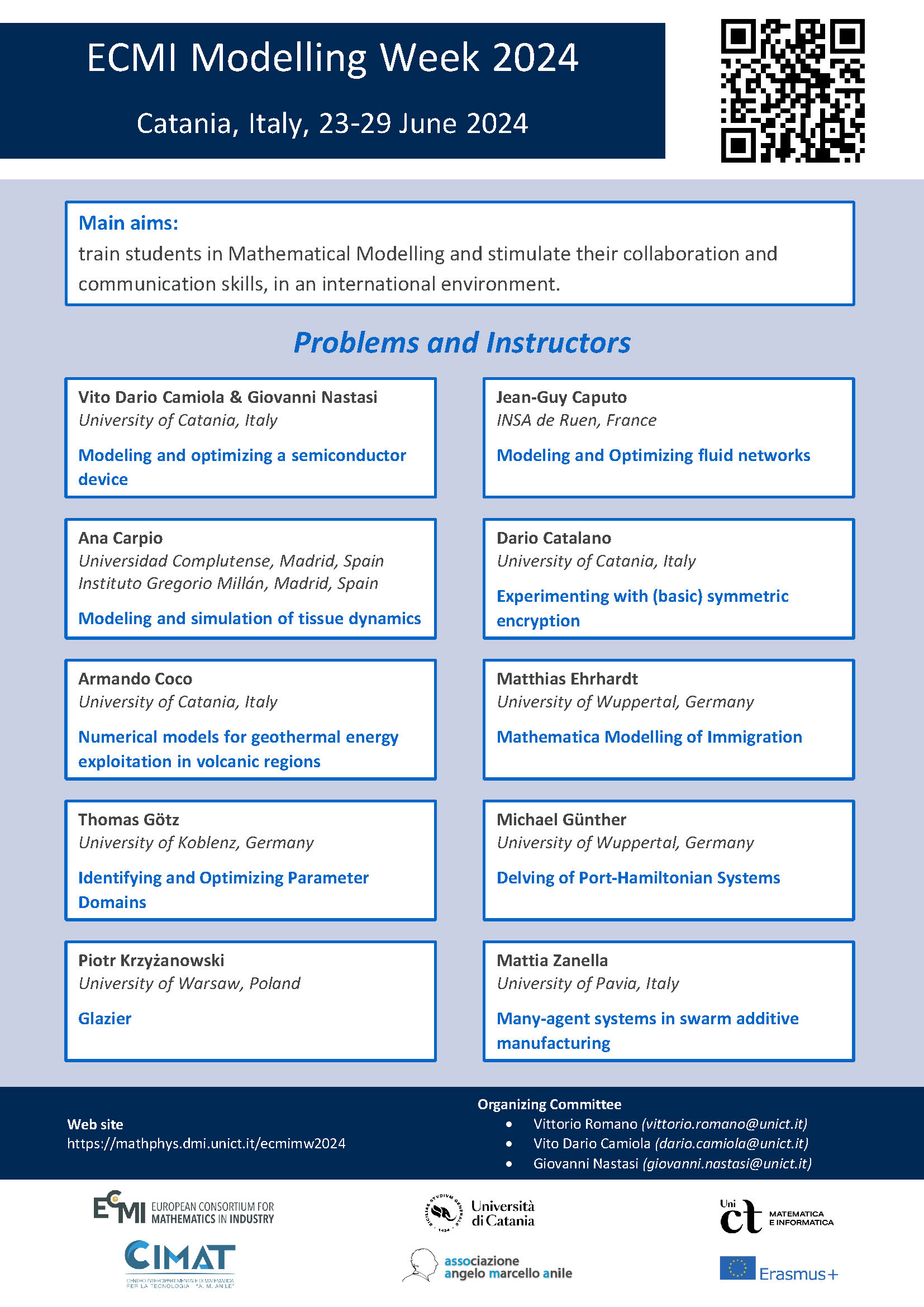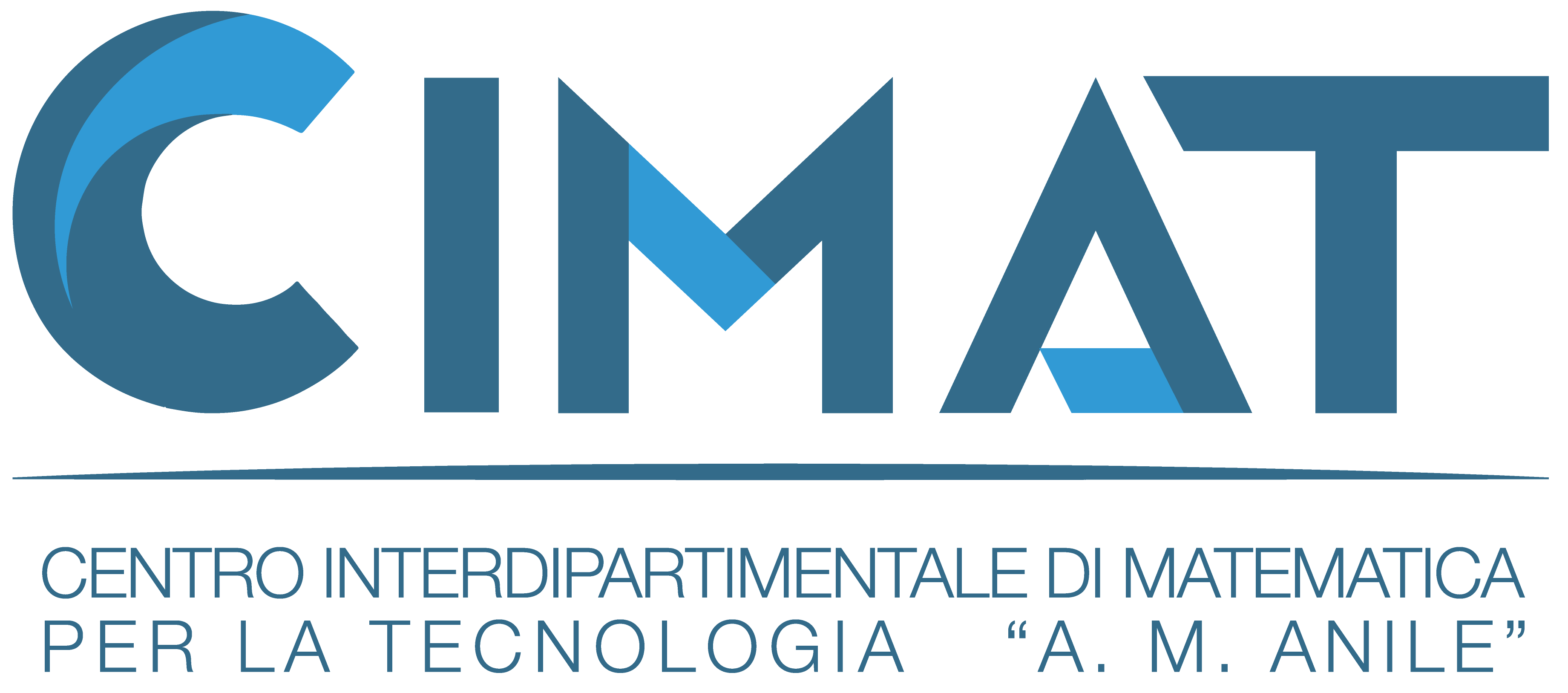ECMI Modelling Week 2024
Catania, Italy, 23-29 June 2024
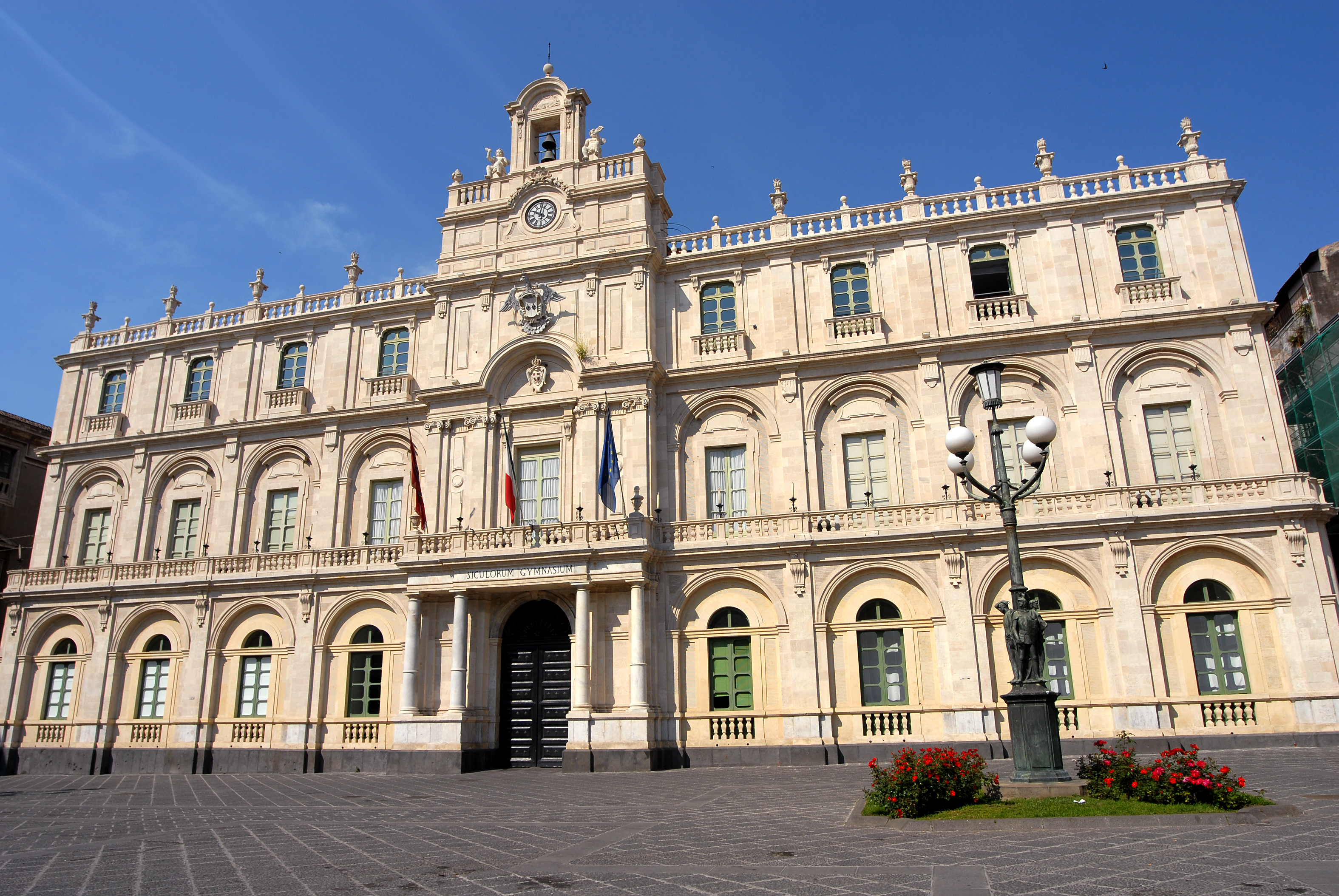
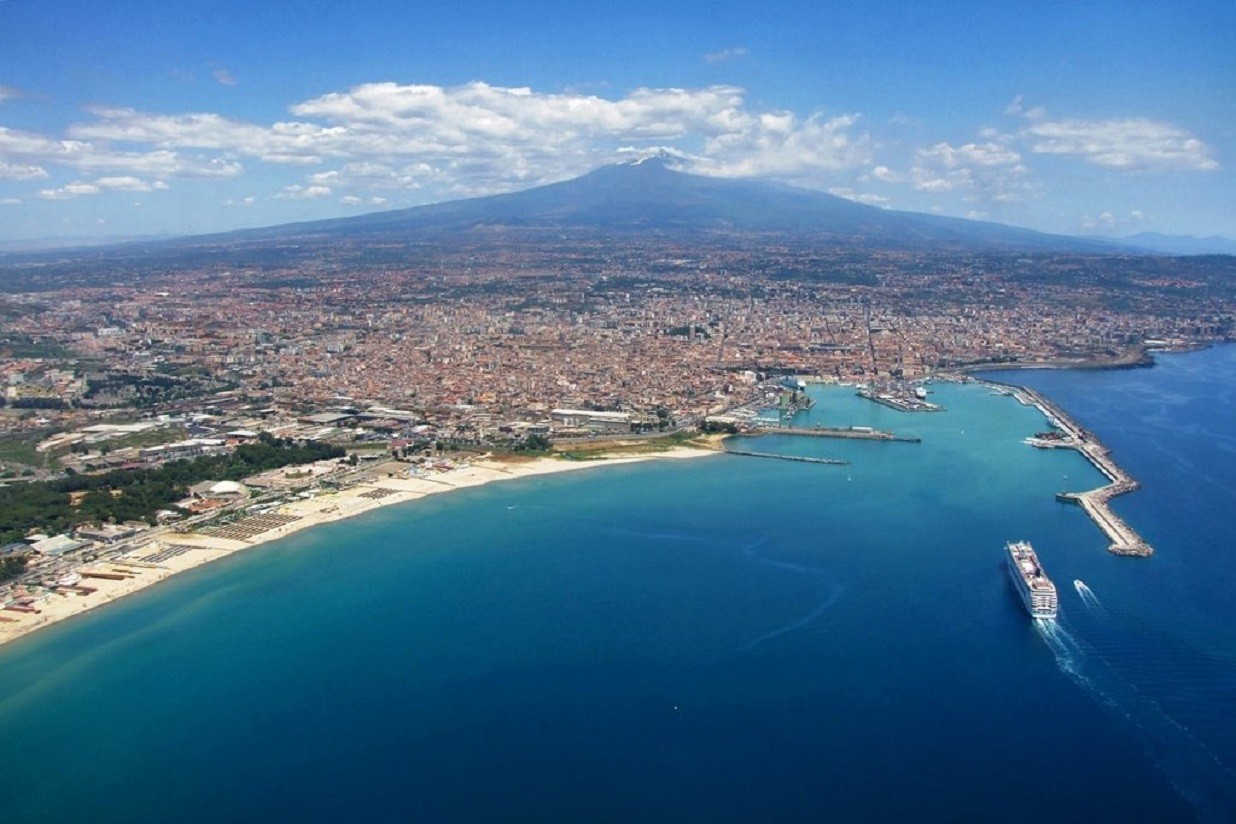
News
- Registration is now open. Please see the section below.
Introduction
The 37th ECMI Modelling Week will take place on 23–29 June, 2024 at the University of Catania, Italy.
Since 1998, ECMI (the European Consortium for Mathematics in Industry) has been organizing annual Modelling Weeks for students. These events attract participants from various European locations who converge for a week-long collaborative experience. During this time, students work in small groups to tackle real-life problems presented on the first day in non-mathematical terms. Each group is guided by one or more ECMI instructors who facilitate problem-solving throughout the week. The culmination involves presenting their findings to other groups and documenting their work in a comprehensive report.
The primary objectives of these Modelling Weeks include training students in Mathematical Modelling and fostering collaboration and communication skills within an international setting. Attendance at a Modelling Week is a crucial component of the ECMI Certificate and many masters courses offered at ECMI centers. Numerous students, not limited to those pursuing formal certificates, have benefited significantly from these impactful courses.
Beyond the annual Modelling Weeks, ECMI members organize similar events, such as Modelling Camps, throughout the year. In 2024, one such event is scheduled to take place at the University of Catania in Italy. For a comprehensive history of past events, a full list is available here.
Problems and instructors
Modeling and optimizing a semiconductor device
Vito Dario Camiola (University of Catania, Italy)
Giovanni Nastasi (University of Catania, Italy)
A crucial role in electronics is played by Field Effect Transistors (FET), semiconductor devices that use the electric field to control the current flow.
There exists a large variety of these devices, e.g. MOSFET, DGMOSFET, FinFET, that are fundamental components for electronic products of normal use as computers, laptops, smartphones, etc.
Traditional semiconductor materials are, for example, silicon or gallium arsenide.
Lately, great attention has been devoted to graphene and other two-dimensional materials.
The reason lies in the need to produce more performant devices exploiting the high conductivity of the materials and reducing the dimensions of the devices and the environmental impact.
Clearly, accurate modeling, performant simulation tools, and effective optimization techniques have a high impact on the industry.
Many of these approaches have been developed over the years but their improvement is still a hot research topic.
In this project, we focus on a simplified one-dimensional drift-diffusion model for MOSFETs and its simulation with the use of MATLAB as a programming language.
The drift-diffusion model is based on partial differential equations that will be solved numerically with a specific finite differences method.
An optimization of the parameters entering the model will be performed to reproduce the experimental results.
Requirements: A personal laptop, basics of MATLAB or any programming language.
Room: Tba
Modeling and Optimizing fluid networks
Jean-Guy Caputo (INSA de Rouen, France)
Many fluid networks (water or gas) are used intermittently. This is caused by the scarcity of ressources like for water in desert regions.
For gas, it could also be due to intermittent demand like power plants starting to compensate a fluctuation of wind in a wind farm.
The detailed modeling of fluid networks involves solving the hyperbolic Saint-venant equations using Rieman solvers [1,2] with the possibility that these need to be switched to pipe fluid equations when the pipes are filled with water.
The network is also a complicated graph with many edges and equipements (pumps, reservoirs) at the vertices.
For these two reasons, it is more practical to use a zero order model taking into account only the fluxes between vertices, see for example [3].
The project will consist in
- implementing such a model on a toy network to understand how it works
- scale up this implementation to a larger, more realistic network
- optimize the functioning of the network
References
[1] Anna M. Lieb, Chris H. Rycroft, and Jon Wilkening,
Optimizing Intermittent Water Supply in Urban Pipe Distribution Networks,
SIAM Journal on Applied Mathematics, Vol. 76, Iss. 4 , 2016
[2] A. Mart, K. Klamroth, J. Lang, G. Leugering, A. Morsi, M. Oberlack, M. Ostrowski and R. Rosen Eds,
Mathematical Optimization of Water Networks, Birkhauser (2012)
[3] A. V. Nekrasov,
Solving equations of water distribution network by the continuation method,
ENGINEERING SYSTEMS, vol3, 1, 2017
Room: Tba
Modeling and simulation of tissue dynamics
Ana Carpio (Universidad Complutense, Madrid, Spain and Instituto Gregorio Millán, Madrid, Spain)
Fluid-structure interactions deeply affect the function and constitution of cellular media, such as tissues and biofilms.
Mathematical modeling and computer simulations can help to understand these interactions, interpret experiments and promote biotechnological advances.
Fluid-solid mixture models coupled to cell metabolism have the potential of capturing a wide variety of behaviors.
They typically combine conservation laws, fluid and elasticity equations, and convection-reaction-diffusion systems.
We intend to develop and simulate such models, adapted to specific situations, such as response of cartilage discs, crawling cell motion, and swelling of damaged tissue.
Mathematical background: PDEs, numerical methods and programming skills (mainly MATLAB).
Room: Tba
Experimenting with (basic) symmetric encryption
Dario Catalano (University of Catania, Italy)
In this brief course, the concept of symmetric encryption will be introduced.
Some examples of historical ciphers will be examined, and arguments will be presented as to why these ciphers cannot ensure the level of security required by modern applications.
Utilizing these examples, we will then move on to study the concept of perfect security, introduced by Shannon in the first half of the last century.
Finally, the inherent practical limits of this notion will be briefly discussed.
The course will adopt a rigorous yet practical approach.
The introduced concepts will be supported by several examples and in-class exercises for students to complete.
Room: Tba
Numerical models for geothermal energy exploitation in volcanic regions
Armando Coco (University of Catania, Italy)
In volcanic regions, the Earth's internal heat is often closer to the surface, presenting a promising opportunity for geothermal energy extraction.
However, the complex geological and thermal dynamics associated with volcanic environments pose significant challenges that necessitate advanced numerical modeling techniques.
Developing accurate and reliable numerical models to harness geothermal energy in areas characterized by volcanic activity is therefore central to unlocking the full potential of this sustainable and renewable energy source, ensuring optimal energy extraction, mitigating geological risks, and contributing to the transition towards a cleaner and more resilient energy future.
The main goal of this problem revolves around predicting thermal dynamics.
Accurate prediction of temperature variations in the subsurface is crucial for effective geothermal energy exploitation.
Numerical models must account for heat transfer mechanisms, including conduction, convection, and thermal expansion, to simulate the dynamic nature of geothermal reservoirs in volcanic settings.
Room: Tba
Mathematical Modelling of Immigration: Ethnic Enclave Formation versus Cultural Integration
Matthias Ehrhardt (University of Wuppertal, Germany)
The effective integration of newcomers into existing communities has become a key concern for policymakers.
With the increasing influx of migrants, countries are experiencing a mix of cultural diversity, new talents, and sometimes social conflict.
To address this issue, we will develop in this modelling project a model that uses agents and networks to study the interactions between established residents ("hosts") and newcomers ("guests").
The goal is to investigate the conditions that lead to either a harmonious and integrated society or a divided and isolated one.
In our model, individuals are motivated by their pursuit of economic well-being, which follows game theory principles and influences their connections within the network, and their desire for cultural acceptance, which is shaped by changing opinions over time.
Our results will show that, given initial conditions, the key factor influencing integration is the rate at which newcomers adapt to the culture relative to the rate at which social ties change, for both guests and hosts.
When cultural adaptation is rapid, it tends to foster cooperation and the development of enduring host-guest relationships.
Conversely, rapid change in social ties tends to result in the creation of isolated enclaves that persist as migrants and natives seek to maximize their economic gains by connecting with their respective in-groups.
In this modelling week project we will also discuss how the size of the migrant population and increased economic incentives for host-guest interactions, whether through government initiatives or the attraction of highly skilled migrants, can affect the overall experience of immigrants in a given society.
Room: Tba
Identifying and Optimizing Parameter Domains
Thomas Götz (University of Koblenz, Germany)
The company ZF is one of the world’s leading suppliers of automotive parts.
Optimization of mechanical and/or electrical designs are one of the major tool to find the best option with respect to cost, weight or functionality.
With the help of numerical calculation methods like FEM a design can be validated based on parameter variations.
Nevertheless it could happen, that the range of the parameters are too wide and unfeasible design points were used in the calculation.
Unrealistic designs, no converging calculation or other constrains leads to such issues.
To avoid unnecessary calculation of unfeasible designs, the parameter range should be limited to be as big as possible but with a certain probability of successful calculations.
For a specific test case, a large set (n≈1000-2000) of data points depending on k (k=5-15) parameters is provided by ZF.
The interpretation of the individual parameters is not available due to confidentiality, but it is also no major importance.
For each of the data points it is know, whether the design using these parameters results in a feasible or unfeasible output.
ZF is now interested in determining a „region" in the parameter space, where the probability to find a feasible design is larger than a given threshold.
- How can mathematics help?
- Can we devise an algorithm to determine this „region" in the high dimensional parameter space?
- Is it possible to do this adaptively, such that a previously computed „region“ can get updated if new, additional data points are available?
Room: Tba
Delving into Port-Hamiltonian Systems: A Case Study Approach with Multiphysics Applications
Michael Günther (University of Wuppertal, Germany)
This intensive ECMI Modelling Week course dives deep into PH systems, using electronic networks and multiphysics coupling as captivating case studies. Starting with a practical case study, you will work on an independent project where you apply your newfound knowledge to real-world challenges. Case Study: Demystifying Power Electronics Through PH Systems We start with an intriguing case study from the realm of power electronics. We'll explore the modeling of a DC-DC converter, a fundamental building block in power circuits, using PH theory. This hands-on approach will introduce you to the core concepts of PH systems, including: • Power Balance and Passivity: Understand how energy flows within the system and its inherent stability properties. • Hamiltonian Structure: Unravel the hidden Hamiltonian structure lurking within the system, unlocking powerful analysis tools. Beyond Electronics: Multiphysics Coupling with PH Having mastered the basics, we'll venture beyond the realm of pure electronics. We'll explore how PH theory can be extended to model multiphysics systems, where different physical domains interact. This could involve: • Thermal-Electrical Coupling: Model the interplay between heat generation and electrical behavior in power electronics. Independent Project: Unleash Your Modeling Prowess Equipped with a solid understanding of PH theory and its multiphysics applications, the student group will embark on an independent project provided by the instructor. Key Benefits: • Hands-on learning: Dive deep into PH theory through practical case studies and projects. • Multiphysics applications: Gain expertise in modeling complex systems with interacting physical domains. • Independent project: Apply your knowledge to solve a real-world modeling challenge. • Expert guidance: Learn from an experienced instructor who is passionate about PH theory. Prerequisites: • Strong foundation in electrical engineering and control theory. • Familiarity with basic software tools (e.g., MATLAB, Julia, Python).
Room: Tba
Glazier
Piotr Krzyżanowski (University of Warsaw, Poland)
A small factory produces windows of various shapes and types, in short batches on demand. To do this, it buys a bunch of large identical sheets of glass (which are quite expensive) and then cuts them into small panes following specification of the current order, and so on. However, the present process leads to considerable portion of glass sheets left unused and thus being wasted, increasing the production costs. The goal is to design a strategy which would limit the overall number of large sheets necessary in the production process.
Room: Tba
Many-agent systems in swarm additive manufacturing: how can we uniformly cover a portion of a domain?
Mattia Zanella (University of Pavia, Italy)
To solve this problem it is required a basic knowledge of SDE and of diffusion equations.
The tutor will introduce the class to simple models for many-agent interacting systems.
It is required to develop a first order system of SDE that is capable of driving the swarm towards a prescribed equilibrium target represented by a uniform distribution over a portion of a multidimensional domain.
Further questions are related to the equilibration trends which can be evaluated numerically.
Room: Tba
Registration
For instructors
The ECMI Modelling Week instructors should fill the online registration form by April 30, 2024.
For students
Students from ECMI centers should get in touch with their local contact to agree on the participation. Then, the online registration form should be filled in for each participant either by the university representative or by the students themselves, by April 30, 2024.
Students from non-ECMI institutions should send to the organizers at cr.cimat@unict.it the additional documents motivating their wish and eligibility for participation in the event (CV, motivation letter and transcript of records, as well as a recommendation letter from a representative of the sending institution) by April 23, 2024. Acceptance/rejection of participation (depending on the application and the number of available places) will be communicated to each applicant individually at least a week before the registration deadline. Once accepted, the students will be asked to fill in online registration form.
Fees
- 400 EUR for students from ECMI nodes
- 500 EUR for students from non-ECMI institutions
The fee covers the expenses of lodging including breakfast and lunch.
After filling out the online registration form you will receive an e-mail from the organizers with the instructions to pay the participation fee.
The registration will be considered completed only after the payment will be received.
Venue
Catania sights
Catania is a city located on the eastern coast of the island of Sicily in Italy. It is the second-largest city in Sicily, after Palermo. Catania is situated at the foot of Mount Etna, one of the most active volcanoes in the world, which has had a significant impact on the city's history.
The city has a rich historical and cultural heritage, with various architectural styles reflecting its diverse past. Catania has faced several natural disasters, including earthquakes and volcanic eruptions, but it has been rebuilt multiple times throughout its history.
Key landmarks in Catania include the Baroque-style Cathedral of Saint Agatha, the historic Elephant Fountain (Fontana dell'Elefante), and the Ursino Castle. The city is also known for its vibrant street markets, lively atmosphere, and delicious Sicilian cuisine. Catania serves as a gateway to exploring the surrounding natural attractions, such as Mount Etna and the beautiful Sicilian coastline.
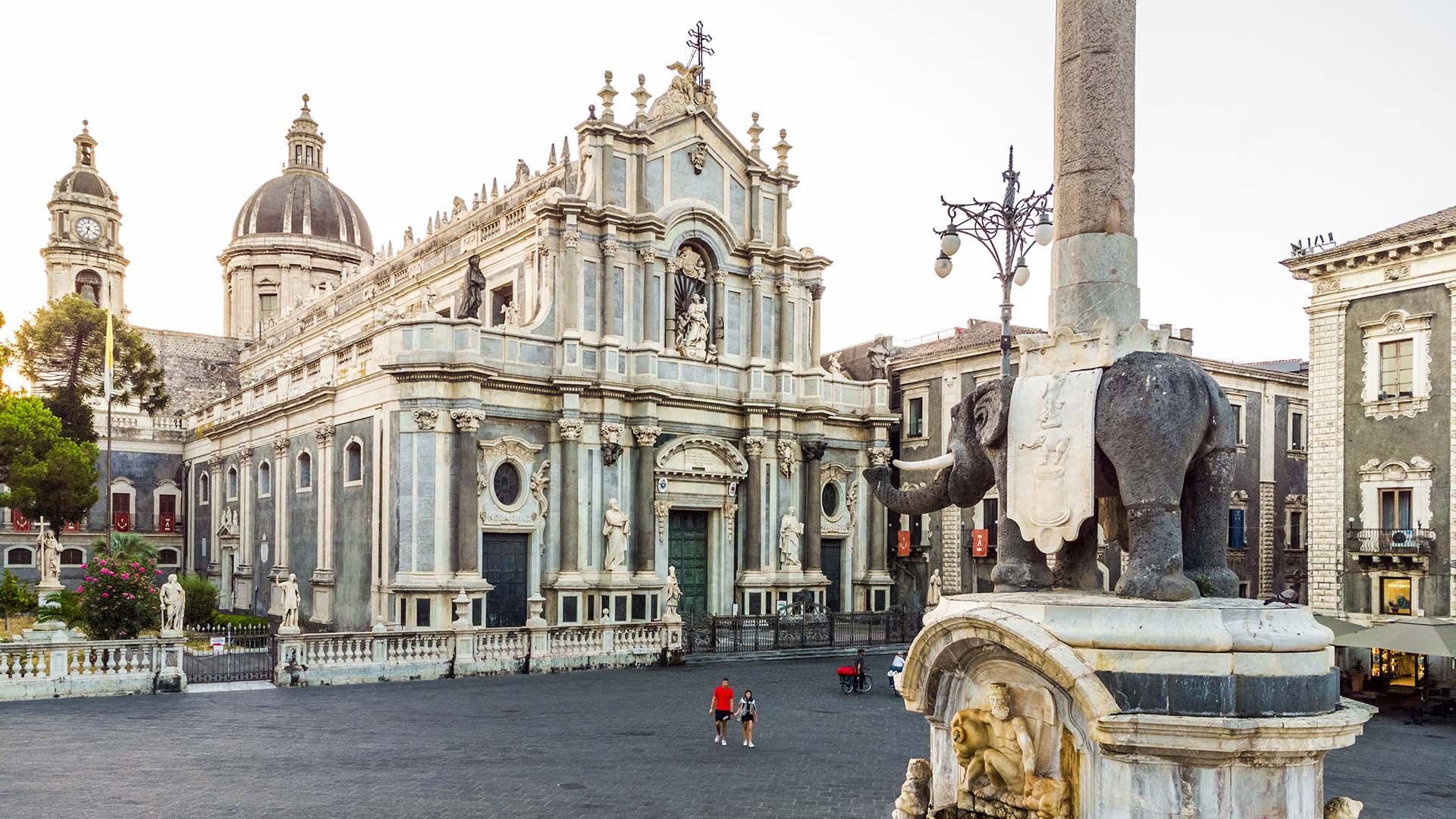

The University of Catania
The ECMI Modelling Week will be held at the Department of Mathematics and Computer Science of the University of Catania.
The University of Catania, located in the historic city of Catania on the eastern coast of Sicily, Italy, stands as a prestigious institution with a rich academic tradition. Established in 1434, it is one of the oldest universities in Italy and has played a significant role in shaping the cultural and educational landscape of the region. The University offers a diverse range of undergraduate and postgraduate programs across various disciplines, including natural sciences, engineering, social sciences and humanities. With a strong emphasis on research and innovation, the University of Catania actively engages in cutting-edge projects and collaborations, both at the national and international levels. The campus itself reflects a blend of historical architecture and modern facilities, providing students with a stimulating learning environment.
Conference location
The Department of Mathematics and Computer Science, whose acronym inside the University of Catania is DMI, is located in the main campus of the University of Catania, named Cittadella, and has the aim of coordinating, developing and spreading the research in the fields of Mathematics and Computer Science.
The conference rooms are located at the ground floor of building n.4 (Edificio 4).
How to reach the conference
It is possible to reach the south entrance of the campus on foot from the end of Via Etnea (see the map). The entrance is in Viale A. Doria, n. 6. It requires about 15 min walking from the crossroad between Via Etnea (about n. 750) and Via P. Bentivoglio. This is the best option.
By bus, it is possible to catch the line BRT1. It travels along Via Etnea in the city center direction and after a long trip (about 30 min) it reaches the west entrance of the campus located in Via Santa Sofia, n. 64.
By metro, if your accomodation is nearby a metro stop you can reach the Milo stop and from there a shuttle connects (each 15 min) the campus with a stop at the Department of Mathematics and Computer Science. Please check this link for further information.
How to reach Catania
By plane
The International Airport of Catania (CTA) is located 7 km from the city center. It is the main airport of the eastern coast of Sicily. There are airports in Comiso (CIY) 100 km, Palermo (PMO) 250 km, Trapani (TPS) 330 km. It is strongly recommended to land in Catania, if you plan to travel through another airport check carefully the connections to Catania.
From the International Airport of Catania it is possible to reach the city center by bus with the line Alibus. Check the time schedule on the AMTS website.
Contacts
Organizing Committee
- Vittorio Romano (vittorio.romano@unict.it)
- Vito Dario Camiola (dario.camiola@unict.it)
- Giovanni Nastasi (giovanni.nastasi@dmi.unict.it)

